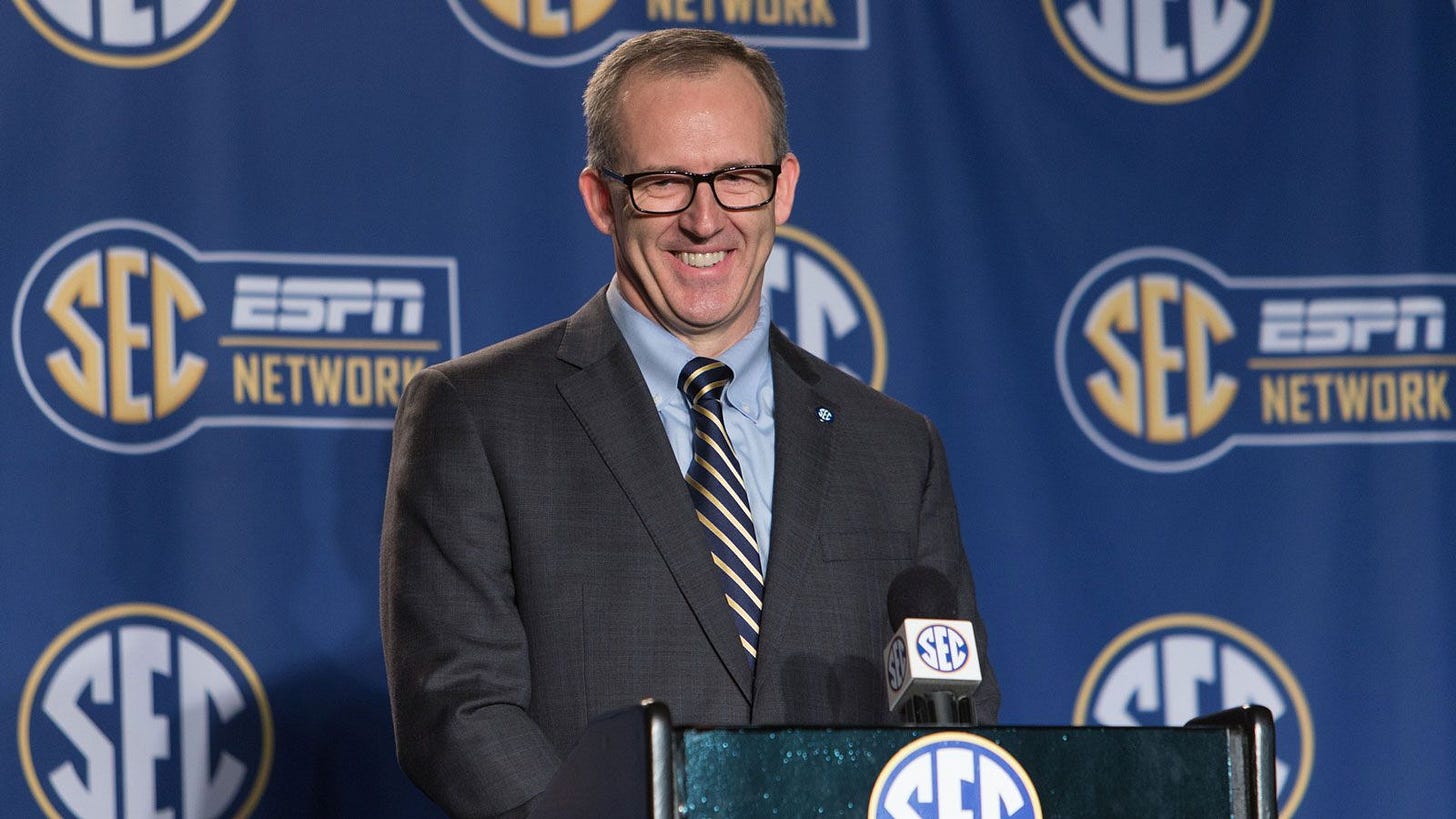There's no stopping NIL now
When even Greg Sankey is begging Congress for help, it's officially over
It was one thing when it was Mark Emmert. Emmert, bless him, never came across as a particularly effective person. Everything with him was reactive; his job, as he saw it, was to figure out what people were mad about that day and then talk about it for a little while, but not actually take any bold action of his own. His views would change with the wind. He was against athletes being paid, but backed cost of attendance scholarships to help heed off public outcry. He was anti-NIL, but then happily changed his rhetoric on the topic when it became clear there was nothing the NCAA could do to stop its introduction.
It was at this point Emmert started to talk to Congress a lot. I covered one such Senate hearing here in D.C. It was a novel but ultimately painful experience — the usual grandstanding and strange non-sequiturs from TV-conscious senators heavily outweighing the number of people genuinely engaged on the topic — and Bob Bowlsby, the former Big 12 commissioner, sounded so panicked about players making money that he made Emmert seem radically progressive by comparison. Emmert and the NCAA had by then adopted the strategy of pretending like NIL was their idea, and not something foisted upon them, but what they really needed to make it work for everyone was a clear framework, guardrails, a national legal standard for what athletes and third parties were and were not allowed to do.
Emmert was in D.C. to beg national lawmakers to help him put the genie back in the bottle. How did that go?
In a short space of time — barely three years — NIL has totally revolutionized college athletics, to the almost exclusive benefit of the talent on the field and floor. It is not an overstatement to say it is the most significant change to college sports since Title IX. Money that didn’t exist before has emerged, and money that was once the sole province of athletics departments, facilities funds, and coaches’ appearance bonuses is going into the pocket of the best non-professional athletes in the world.
For decades, people have wondered how this would all work, what chaos unsanctioned money would introduce to college sports. And it’s been … totally fine. The schools don’t have to write players a payroll check or make them full employees (whether they should is a different argument, don’t get me wrong) and thus upset their long-decried equilibrium of scholarships and resources in cash-strapped athletics departments, while players get a chance to realize their value while they go to school. It is a beautifully elegant solution to a problem that existed for decades.
Given all this, it has been amusing to watch the most powerful people in college athletics still desperately trying to circle their arms around the genie.
Keep reading with a 7-day free trial
Subscribe to Buzzer by Eamonn Brennan to keep reading this post and get 7 days of free access to the full post archives.


